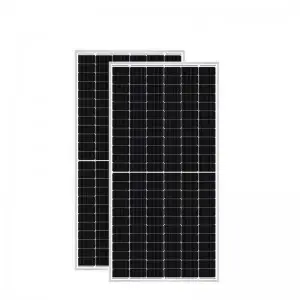Solar power has emerged as a sustainable and viable alternative to conventional electricity. With the growing focus on renewable energy, solar panels have become a popular choice for both residential and commercial applications. However, to fully understand the benefits of solar power, it is necessary to understand how much electricity a solar panel can generate. In this blog post, we’ll delve into the intricacies of solar panel productivity and explore the factors that affect kilowatt-hour (kWh) production.
Solar Panel Efficiency:
Solar panel efficiency plays an important role in determining the amount of kilowatt-hours a solar panel can produce. More efficient panels convert more sunlight into electricity, increasing electricity production. Currently, most commercial solar panels have an efficiency rating between 15% and 20%. However, technological advances are continuously improving panel efficiency, reaching efficiencies of over 25% in some models. It’s worth noting that higher-efficiency panels typically cost more, so homeowners need to strike a balance between performance and budget.
Geographic location:
The geographic location where a solar panel is installed has a direct impact on how much it can generate. Areas with more sunlight, such as deserts or areas near the equator, receive higher levels of solar irradiance. Therefore, solar panels in these areas can generate more electricity. On the other hand, regions with longer winters or frequent cloud cover may experience reduced energy production. Therefore, it is critical to consider the local climate and sunlight availability when estimating the kWh output of a solar panel.
Panel Orientation and Tilt Angle:
The orientation and tilt of a solar panel can significantly affect how much power it can generate. Ideally, solar panels should face the equator to maximize exposure to sunlight throughout the day. In the northern hemisphere, this means the panel should face south, while in the southern hemisphere, it should face north. In addition, the tilt angle or inclination of the panels should match the latitude of the installation site for optimal sunlight absorption. Deviations from these optimum angles may reduce kWh production.
Seasonal differences:
Seasonal changes in sunlight intensity can affect the energy produced by solar panels. In summer, the days are longer, the sun is higher in the sky, and solar panels generate more kilowatt-hours. Conversely, in winter, shorter days and lower sun angles lead to less power generation. Thus, the annual kWh production of a solar panel system is affected by variations in the solar resource throughout the year.
Panel Maintenance and Shading:
Regular maintenance of solar panels ensures optimal performance. Dust, debris or dirt that accumulates on the panels can block sunlight absorption, reducing kilowatt-hour generation. Therefore, regular cleaning is necessary to maintain peak output. Additionally, shading from nearby trees, buildings, or other obstructions can greatly affect solar panel productivity. Installing solar panels in unshaded areas is critical to maximizing kilowatt-hour production.
Solar panels have proven to be a clean, renewable energy source capable of reducing dependence on fossil fuels. The productivity of solar panels is determined by a variety of factors such as panel efficiency, geographic location, orientation and tilt angles, seasonal changes, and shading. By understanding these variables, homeowners and businesses can make informed decisions about solar panel installation and accurately estimate the kWh production potential of their solar systems. The world is transitioning to sustainable energy, and solar panels are undoubtedly playing an important role in this global movement.
Post time: Jul-21-2023
